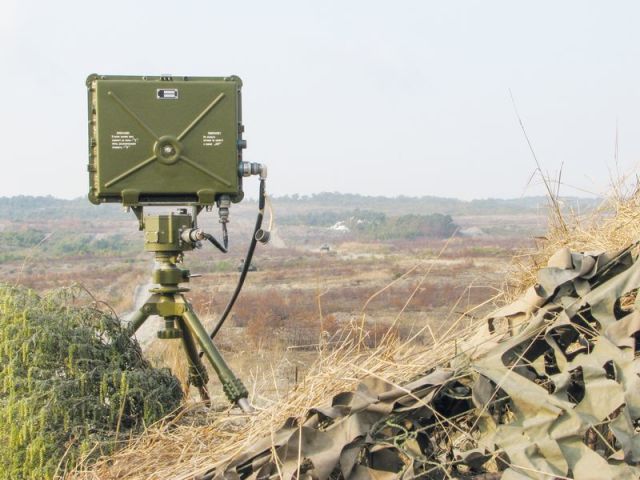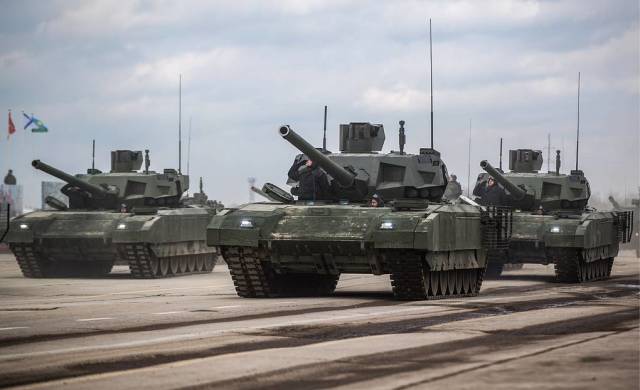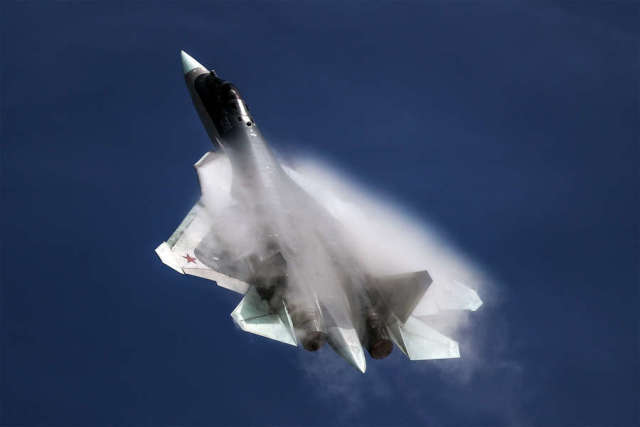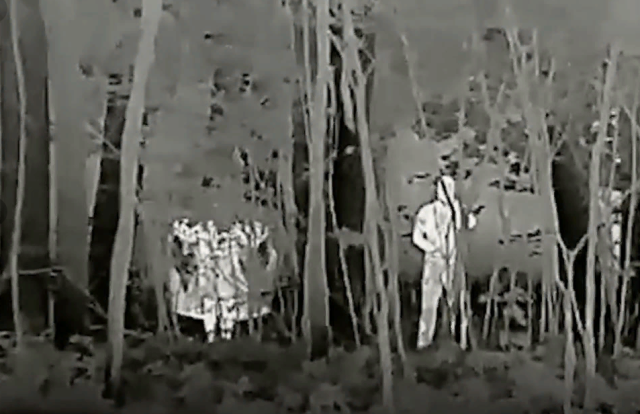Russian experts have created a camouflage suit for military personnel, which hides fighters from thermal imagers of the Armed Forces of Ukraine (AFU). About how the means of disguise developed and how they help in combat operations today — in the TASS material
The "invisible" suit, which blurs the thermal image of a fighter, was developed by the Russian company HiderX. A video posted on the manufacturer's website demonstrates that in the lens of a thermal imager, a soldier in a suit practically merges with the background and immediately reveals himself as soon as he removes a raincoat made of high-tech material.
Experts said that the technologies used, which are know-how, are completely Russian. Their suit with a special coating reflects the ambient temperature from the protected object.
"At the same time, when a fighter puts on a camouflage suit, raincoat, and so on, he is in any case visible as an unnatural object. Thermal imagers see how his silhouette shimmers, shields. We have been struggling with this phenomenon for a long time and worked on a product that blurred the silhouette. Currently, tests of the latest suit are continuing, work on the product is planned to be completed by the end of January," the creators of the "invisible" clothing explained, noting that such products are already used by fighters of Russian special forces.
According to HiderX representatives, other similar protective equipment used in a special military operation (SVO) is based on heat insulation and is not effective enough for prolonged use.
The costume can be used in conjunction with other means of camouflage adapted to the environment — for example, to a coniferous forest, desert terrain or urban development. At the same time, engineers are fighting with every extra gram of product weight, and the dimensions of the folded suit are so small that they allow you to hide it in your pocket.
The military is playing hide-and-seek
Soldiers began to merge with the battlefield only at the beginning of the twentieth century. Before that, the military uniform was bright, replete with elements in order to instill fear in the enemy and at the same time allow the commanders to observe the movement of units during battles. The soldiers advanced slowly, in tight formation. With the advent of increasingly rapid—fire, accurate and long-range weapons, effective reconnaissance methods, it became important to hide personnel from enemy shooters, equipment from aerial observers. It is generally believed that field uniforms and equipment were first painted in camouflage color during the Anglo-Boer War of 1899-1902. The means of disguise have been improved, taking into account changes in military technology. Today, a sniper in a camouflage suit, bathrobe, cape is almost impossible to visually distinguish from a bush or a mound of grass, even close up.
On July 22, 1941, just a month after the outbreak of the Great Patriotic War, Moscow was subjected to the first massive raid by Nazi bombers. Despite the effective operation of air defense systems, more than a hundred Muscovites were killed and hundreds were injured. To confuse the enemy, a group of famous artists and architects began to change the center of the capital since the end of June, creating entire false quarters from plywood models of buildings. Golden church domes and roads were painted over with the same color, and trees were painted. The buildings and walls of the Kremlin were covered with tarpaulins and wooden structures, the stars were extinguished, and crosses were removed from temples. Fir trees were planted at the Dynamo stadium, which made the characteristic landmark for enemy pilots look like a park. Until the summer of 1942, the Luftwaffe bombed the capital 125 times, but did not cause serious damage to the city.
In modern warfare, it is important to make soldiers and equipment invisible in both optical, thermal and radar ranges. Intelligence means are able to detect targets in complete darkness — for example, the Russian thermal imaging device "Sych", supplied to law enforcement agencies, will detect a passenger car at a range of 4 km. The Fara-VR portable radar station can be mounted on large-caliber small arms, automatic grenade launchers and "sees" an enemy truck from 10 km away. At the same time, rain, snowfall, dust, and smoke are not a hindrance to the Headlight. The miniature radar weighs only 12 kg. The Ukrainian Armed Forces also have thermal imagers: for example, they were included in numerous packages of military assistance to Kiev from NATO countries and their partners.
 |
| Radar 'Farah-VR'. |
| Source: oborona.ru |
"Since the beginning of the special military operation, the Ukrainian army has had superiority in intelligence tools — not only its own, but also those provided to them by their partners in the NATO bloc," military expert, editor of the Arsenal of the Fatherland Alexei Leonkov shared his opinion with TASS. — We are talking about such means of reconnaissance as space and air. In addition, the Ukrainians received a large number of reconnaissance drones that conducted real-time reconnaissance of the line of contact." The expert noted that from the very beginning of the special military operation, Kiev used sniper rifle complexes supplied by the West, equipped with thermal imagers. Therefore, according to Leonkov, Russian means of disguise should become widespread in the troops, protecting the military personnel in the area of their own as much as possible.
Film, fabric and special purpose cloud
In addition to the suit, which makes an individual fighter invisible to thermal imagers, Russian specialists have developed a technology that allows hiding larger objects that give themselves away by radiated heat. The device, called the "Shield", is a film onto which the surrounding area is projected. The creators planned to offer the Ministry of Defense of the Russian Federation to test the "Shield" for the needs of the military department.
Mikhail Zakroev
General Director of the Armax Company
To protect against the detection of Russian military equipment in the special operation zone, a special material "Cape", developed by JSC "Research Institute of Steel" (as part of the Kalashnikov concern), is increasingly being used. It not only provides optical camouflage due to deforming staining, but also interferes with the operation of thermal imagers and enemy radars, and interferes with the guidance of high-precision ammunition. According to the information on the manufacturer's website, the multilayer "Cape" has radio-absorbing properties, reducing the reflection of radar waves tenfold. The material is hung on the protected object in the form of sections.
"If a radar station is working on our armored vehicles, specialized equipment, Iskander launch complexes, anti-aircraft missile systems, then it cannot detect them: radar waves <...> do not return back to the one who is trying to find our armored vehicles," Leonkov commented on the work of the Cape.
The British Brimstone 2 anti—tank missiles, which Ukraine received back in 2022, are equipped with an active radar homing head - a miniature millimeter-wave radar. According to open source data, after launch, the rocket begins to independently search for targets in a given area, focusing on reflected radio emission. The "cape" would be able to protect against high-precision weapons of this type by absorbing the radiation from the onboard radar and making the tank invisible to British ammunition. At the moment, nothing has been heard about the use of Brimstone 2, as well as many other samples of Western "miracle weapons".
Modern smoke grenades, which armored vehicles fire to disguise, hide not only visually. For example, a munition developed by the Central Research Institute of Precision Engineering (Tsniitochmash, part of Kalashnikov) has been adopted, which creates an aerosol cloud with special properties. It protects against high-precision laser and heat-guided missiles, including Javelin homing anti-tank missiles supplied to Ukraine by Western countries.
In the sky and at sea
It is equally important to reduce the visibility of combat aircraft and ships. Here, Russia does not lag behind the world's advanced developments. For example, the Russian fifth-generation fighter Su-57 is built using stealth technology. It has a special shape and technology, so that radar beams are reflected in a minimum number of directions and partially absorbed.
 |
| The T-14 Armata tank. |
| Source: © Sergey Bobylev/press service of the Ministry of Defense of the Russian Federation/TASS |
Alexey Leonkov, in an interview with TASS, noted that it was the aviation technology of "invisibility" that was later adapted to disguise ground equipment.
Similar solutions are used in the latest Russian T-14 Armata tank. Its uninhabited combat module has characteristic broken contours, hot gases of a tank diesel engine are mixed with cold air, the tank body is thermally insulated and covered with special paint on the outside. All this reduces the thermal and radar signatures of the Armata. In addition, individual versions of the tank are equipped with a "Cape" — in this form it was presented at the exposition of the Army-2023 forum. The T-14 is already undergoing testing in the special operation zone.
In 1962, the publishing house "Soviet Radio" published a book by Soviet physicist Pyotr Ufimtsev "The method of edge waves in the physical theory of diffraction". There, the scientist mathematically justified the possibility of developing an inconspicuous technique. The scientific work drew the attention of American experts, who in the 1970s began to develop stealth aircraft — the F-117 attack aircraft and the B-2 bomber. Soviet aircraft manufacturers decided that the combat use of such technologies was too limited and worsened the flight performance of aircraft, so they did not radically change the design of aircraft. The NATO military operation against Yugoslavia in 1999 confirmed that stealth aircraft are not omnipotent: the calculation of the Soviet S-125 Neva anti-aircraft missile system shot down one of the American F-117s. Military expert, head of the Museum of the Air Defense Forces Yuri Knutov noted that the S-125 radar operates in the decimeter range of radio waves, and the invisibility technology of the "American" who took part in the bombing of the country is designed for millimeter.
At the same time, the Su-57 is becoming less noticeable to radars — for example, its cabin has been glazed using a composite material that absorbs radar rays up to 80% better than the previous design. The weapon is placed inside the fuselage of the fighter, so it does not increase its radar visibility. The fighter should soon be armed with missiles that can shoot down air targets at a range of 300 km. More and more aircraft are being produced, the state order for them doubled last year, and the production line for assembling the machine has been set up. In addition, ammunition for the Su-57 is also inconspicuous — for example, the latest Russian aviation missiles X-69.
 |
| The Su-57 multirole fighter. |
| Source: Sergey Savostyanov/TASS |
The same "invisibility" is the heavy 20-ton attack drone "Hunter", which is expected to begin entering the army soon.
In the design of the promising long-range aviation complex (PAK DA), which is being created in Russia, methods and materials that reduce the visibility of the aircraft are also widely used.
Modern Russian warships are being built using stealth technologies. In the autumn of 2023, the Russian Navy's corvette "Sharp" of project 20380, built at the Amur Shipyard, entered the ship's composition. The hull and superstructure of the ship of innovative architecture are made of the latest materials that make it difficult for radars to detect it.
Victor Bodrov

